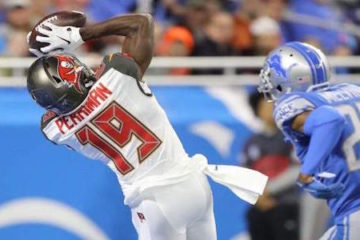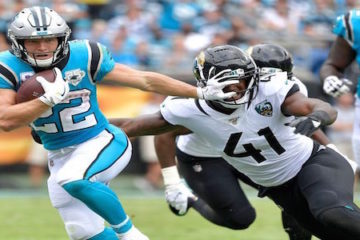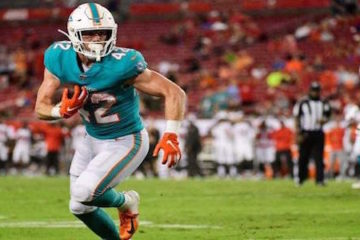2011 Fantasy Baseball Saber School: A Brief Overview Of Line Drive Rates & Fantasy Baseball
I could keep listing things that come in pairs for awhile (bed-pillow, women-HGTV, Jergens-Kleenex), but because this is a fantasy baseball website and I should probably finish up the set-up/segue portion of this article and get into why line drive rate is a stat best used in conjunction with other advanced metrics.
Line drive rates can be deceiving because the statistic is fairly variable from year to year. Because of that, it is different from other advanced metrics in that it does not necessarily regress toward a mean.
As proof of line drive rate variability, I offer this: Among the 25 qualified hitters with the highest line drive rates of 2009, only five of those hitters were among the top 25 in line drive rate in 2010. And from 2010’s top 25, only two are in the top 25 so far this season.
Where line drive rate can be helpful is when it is used as a supplementary stat to BABIP. Because line drives are the type of batted ball most likely to result in a hit (as compared to ground balls and fly balls), a high line drive rate can lead to a high BABIP.
When you see a batter with a high BABIP, do not automatically assume it is a result of good luck. First look at a player’s line drive rate and determine if that is what is actually driving the high BABIP. If so, a higher-than-normal BABIP may be sustainable. What raises a red flag is when a batter has a high BABIP but a low line drive rate. That is an indication that a batter’s BABIP is driven more by luck.
If you are wondering what a ‘high’ or ‘low’ line drive rate is, an average rate is probably somewhere around 18-19%. The farther away you get from those numbers, the better or worse the line drive rate is.
When looking at a pitcher’s BABIP, it is a good idea to look at a pitcher’s BABIP in conjunction with his ground ball rate. Because ground balls are the type of batted ball least likely to cause damage, a high ground ball rate may lead to a low BABIP. Red flags are again raised when a pitcher has a low BABIP but also a low ground ball rate. This is also an indication that a pitcher’s BABIP is driven more by luck.
As for what a ‘high’ or ‘low’ ground ball rate is, an average rate is probably around 45%.
So, who are some guys you can buy or sell on based on this information?
Nick Swisher (New York Yankees, 53.4% owned)
Despite an excellent 22.4% LD%, Swisher’s BABIP is only .254, so his average is only .210. If Swisher keeps squaring pitches up at that rate, the BABIP and average will both begin to rise. Additionally, Swisher’s walk rate is back up near his career rate of 13-14%, and his HR/FB rate is 9% lower than his career average, so the pop is likely going to come around as well.
Edwin Jackson (Chicago White Sox, 21.7% owned); Derek Holland (Texas Rangers, 5.8% owned)
Both of these guys are so similar that I could not choose just one. They have the exact same GB% of 46.4% and each have a BABIP right around .350. As a result, each has a FIP and xFIP much lower than their ERA. So, each has pitched better than their ERA would indicate.
Even the concerns I have with each guy are the same. They both allow too many walks and have home ballparks that make starting them there risky. However, both are also widely available in ten-team leagues, so you can simply use them as spot starters when the matchups are safe.
Hunter Pence (Houston Astros, 100% owned)
Although line drive rate can be variable, Pence put up almost identical line drive numbers from 2008-2010. The problem is that 14% seems to be the line drive rate on which Pence has settled, and that is what his line drive rate is again this year. However, from 2008-2010, Pence’s BABIP was between .301 and .308. This year his BABIP is .368. Needless to say, that is completely unsustainable.
Other negatives are the fact that his K rate is up, he does not walk all that much, and he seems to be running much less (only 3 steal attempts so far this season). It seems safe to say that now would be a good time to trade Pence.
Jeremy Hellickson (Tampa Bay Rays, 100% owned)
A rookie with as much prospect name value as anyone who also boasts a 2.80 ERA and had a stellar outing his last time out. Sounds like a player you should be happy to own. However, Hellickson’s .238 BABIP is every bit as lucky as it looks thanks to a 35.4% ground ball rate.
On top of that, his K rate is fairly low at 6.44 K/9, and his walk rate is fairly high at 3.78 BB/9. And let’s not forget the fairly high strand rate of 80% and HR/FB of 5.8% that allows some room for regression.
To me, Hellickson sounds like a sell-high candidate.
Written by Brett Talley exclusively for thefantasyfix.com. Brett is a law student in Dallas who watched
Derek Holland get rocked in the 6th inning while writing this. However, he is still recommending
Holland. You can follow Talley and/or ask him for fantasy advice on Twitter @therealTAL.
(May 14, 20112011-05-14 16:00:00 – Photo by Al Bello/Getty Images North America)
Tags: The Fantasy Fix, 2011 Fantasy Baseball, Fantasy Baseball Advice, 2011 Fantasy Baseball Rankings, BABIP, Line Drive Rates, Sabermetrcis, Advanced Fantasy Baseball, Brett Talley, Buy Low, Sell High, Nick Swisher, Jeremy Hellickson, Edwin Jackson, Derek Holland, The Rubber







